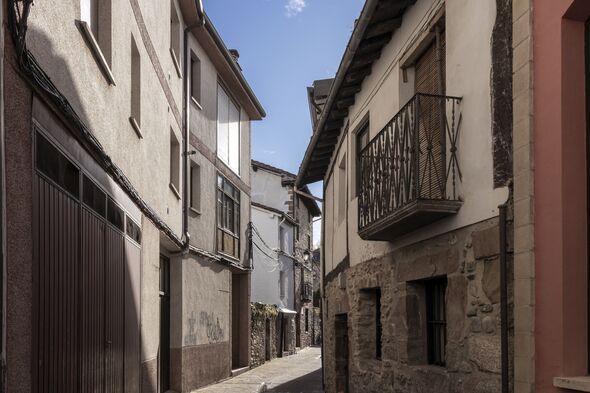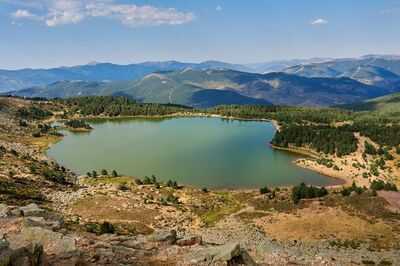
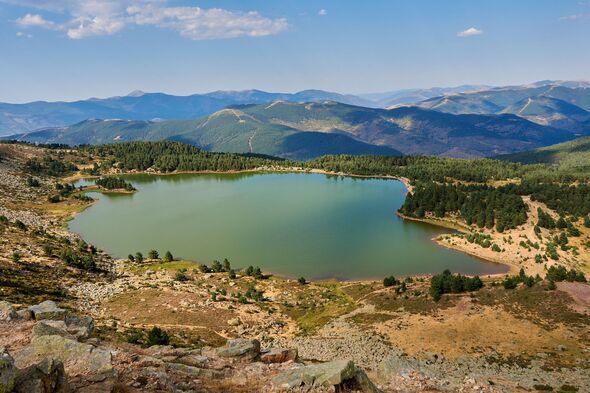
This is not the Spain of little white houses nestled in olive groves, nor does it offer the packed sands and buzzings bars of Benidorm of Marbella.
Overtourism is a massive concern in Spain and every summer cities like Barcelona are swamped with British visitors while perenial favourites Balearic Islands and the Costas are teaming with holidaymakers crowded onto the beaches and spilling out of the bars.
Then there are the extreme temperatures to contend with, with many Spanish resorts regularly seeing figures about 40C thanks to global warming.
But there is one largely undiscovered region of this vast and hugely popular country where not only is the weather a little cooler and wetter, there are hardly any tourists either.
The Sierra de la Demanda mountains in Spain span the least populated regions of Burgos, Soria and La Rioja so while other parts of Spain struggle with the pressures of over-tourism, these wild, expansive and almost tourist-free mountains offer a lungful of fresh air.
Located in the remote northern interior, halfway between Madrid and Santander, their isolation was their main attraction for travel writer Lois Pryce.
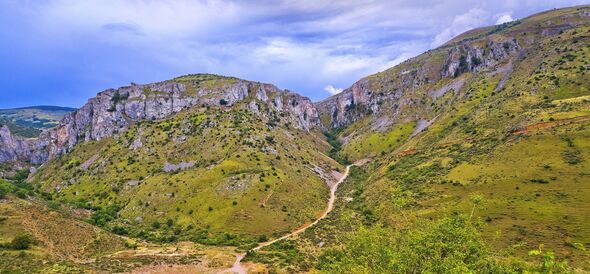
She told the Guardian: "While studying a map of Spain, my interest was piqued by a patch of grey and green emptiness bearing the enticing words: Sierra de la Demanda.
"I've travelled all over Spain for work and play in the last two decades, but somehow these "demanding" mountains had eluded me.. An investigation of more detailed maps revealed an almost roadless expanse of limestone peaks, valleys, ravines, rivers, gorges and glacial lakes, with the highest peak, San Lorenzo, towering at 2,271 metres (7,451ft). The calling was real."
"This is not the Spain of white villages and dusty olive groves. On the Demanda's north face, where the climate is wetter and cooler, the improvised allotments, stone ruins and makeshift shacks are reminiscent of the forgotten corners of eastern Europe."
The closest thing to a tourist area here is the town of Ezcaray, on the north side of the mountains, that operates as a base for the small ski resort of Valdezcaray, built in the 1970s.
The local Spanish tourist board writes: "The town of Ezcaray and its surrounding area are as ideal for those who seek rest and peace and quiet."
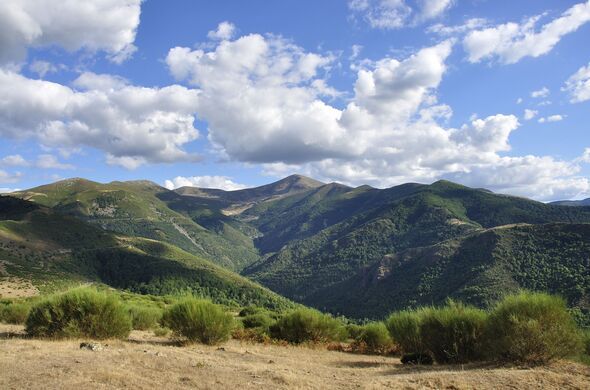
It can be a nail-biting drive, Lois says along a ridge that's at more than 1,800 metres (6,000ft), but "the views are stupendous in every direction - fold upon fold of untouched mountain wilderness and, apart from the occasional hiking trail signpost, nothing human-made in sight."
Down into the southern foothills are the Lagunas de Neila, a cluster of glacial lagoons, surrounded by cliffs and pine forests. The lakes can only be reached on foot, and at an altitude of 6,000ft make for an invigorating dip.
Lois adds: "The water is, as you would expect, bracing, but it's the sheer scale of the surroundings, and the solitude, that will take your breath away. The only sound accompanying my swim was a chorus of surprisingly loud frogs, ribbeting from the reeds."
The closer to sea level you travel the climate becomes warmer and drier again and while there are plenty of hiking and bike trails to follow this is, she says "still "España vacía" - empty Spain - and human activity remains a rare sight outside the towns."
The village of Quintanar de la Sierra, in the southern foothills, makes a good base to explore the Demanda. The Hostal Domingo offers affordable rooms (doubles from €55/£47 room-only ). A coffee will set you back just €1.50 (£1.20).
Be warned though, this forgotten paradise is not the Spain most Brits are familiar with. Nobody speaks English and the locals still get around on horseback. Everyone socialises in the town plaza and the hotels and bars are a throwback to the 1970s.
Lois concludes: "This is the land that social media forgot, and is better off for it. Although it may appear on the surface that there's not much in the way of tourist attractions, as you delve deeper into its hidden corners, an intriguing and eclectic landscape of history and culture reveals itself."
Just over the hill is one of cinema's most well-known locations, where The Good, The Bad & The Ugly was filmed in 1966.
Dinosaurs roamed this part of Spain, and hundreds of their footprints are visible near the town of Salas de los Infantes, which also boasts a dinosaur museum.
There is also is the eerie Necropolis de Cuyacabras, dating from the ninth to 11th centuries, where dozens of adult- and child-size tombs are carved from a slab of rock in the depth of a pine forest. There are abandoned monastries, Roman ruins and bridges and disused railway lines to explore.
The nearest airport to this region is Vitora Airport (VIT) in the Basque region with flights with Ryanair or Vueling Airlines.
